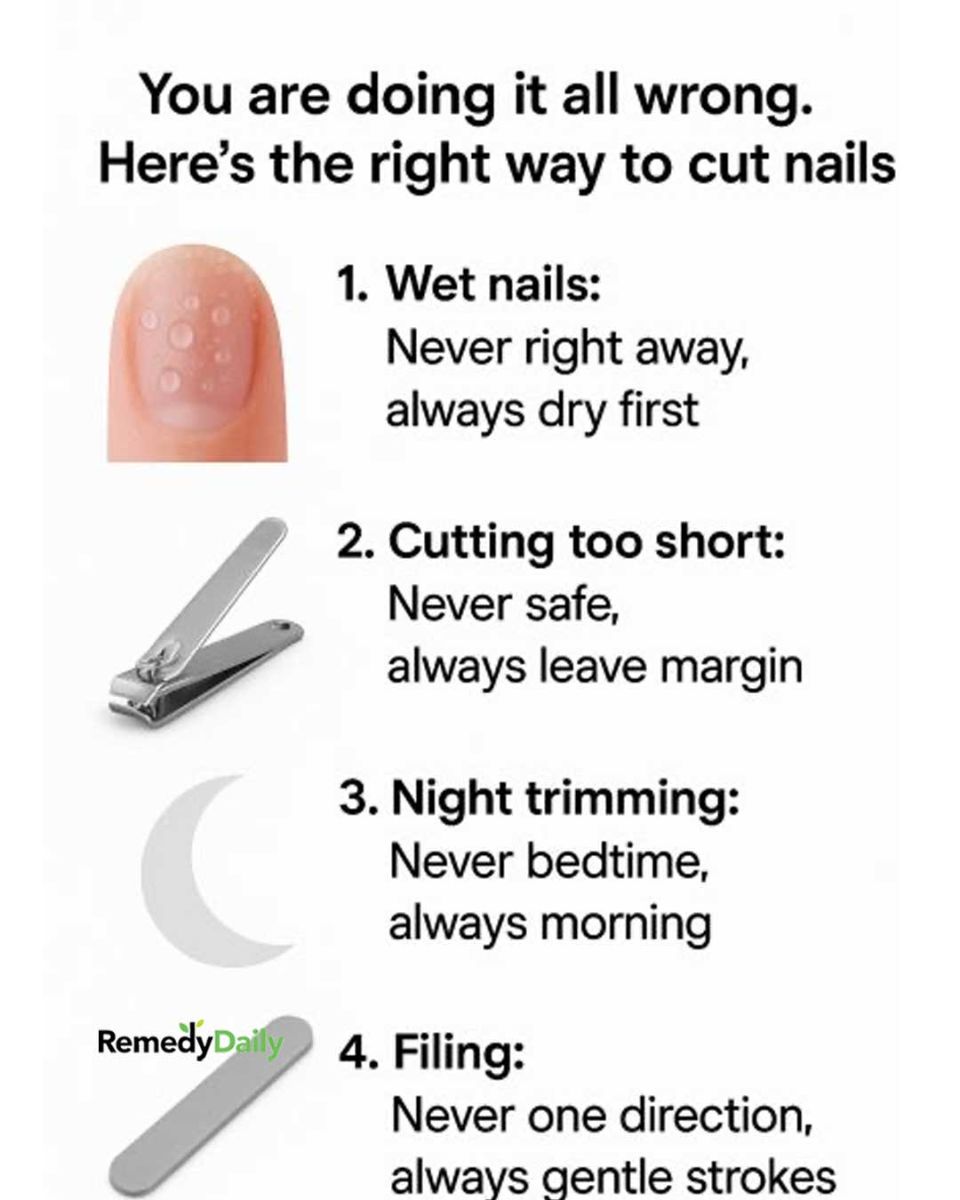Nail care is often an overlooked aspect of personal grooming, yet it plays a crucial role not only in aesthetics but also in maintaining overall hand and foot health. Proper nail cutting is essential to avoid issues such as ingrown nails, infections, and general discomfort. However, many people are unaware of the correct techniques and practices to adopt when trimming their nails.
In this article, we will explore the common mistakes people make when cutting their nails and provide a comprehensive guide to doing it the right way. From understanding the importance of nail care to selecting the right tools and techniques, this guide will ensure your nail grooming routine is both effective and safe.
Advertisement
1. The Importance of Proper Nail Care
Nails can be indicators of your overall health, and maintaining them properly can prevent a host of problems. Proper nail care includes keeping them clean, trimmed, and filed to prevent breakage and splitting. Unkempt nails can harbor bacteria and fungi, leading to infections that are not only unpleasant but can also be painful.
Keeping nails at an appropriate length, which is generally about 1-2 millimeters above the nail bed, helps reduce the risk of trauma. Regular trimming prevents nails from snagging on clothing or other materials, which can cause them to tear or break. By adopting a consistent nail care routine, you’re not only ensuring the nails look good, but you’re also setting a foundation for healthy nail growth.
2. Why You Should Always Cut Dry Nails
Cutting nails when they are dry is crucial because wet nails are more prone to tearing, bending, and splitting. When nails absorb water, they become softer and more pliable, which might seem like it would make them easier to cut. However, this softness also makes them more susceptible to damage.
For best results, wait until your nails are completely dry before cutting them. This ensures the nail clippers can make a clean, precise cut, reducing the risk of jagged edges and potential hangnails. A good practice is to wait at least 30 minutes after a shower or washing your hands before trimming your nails.
3. The Risks of Cutting Nails Too Short
Cutting nails too short can lead to a variety of problems, the most common being painful ingrown nails. An ingrown nail occurs when the nail grows into the skin, often resulting in redness, pain, and swelling. The ideal nail length should be just enough to cover the finger or toe without extending significantly beyond it.
Additionally, cutting nails too short exposes the sensitive skin beneath the nail, increasing the risk of infections. It’s essential to leave a small margin of white nail edge, typically around 1-2 millimeters, to protect the nail bed and surrounding skin.
4. Best Time of Day for Nail Trimming
While there’s no universally ‘perfect’ time of day for trimming nails, doing it in the evening can be advantageous. In the evening, your body temperature and circulation are generally higher, which can make nails slightly more flexible and easier to cut.
Additionally, many people find they have more time and patience in the evening, which reduces the likelihood of rushing and making mistakes. By incorporating nail trimming into your evening routine, you can ensure that the process is both thorough and relaxed.
5. Choosing the Right Tools for Nail Cutting
The tools you use for nail cutting are just as important as the technique. Investing in a quality pair of nail clippers or nail scissors is crucial. These should be stainless steel, ensuring they remain sharp and rust-free. Clippers should be the appropriate size for your nails—larger clippers for toenails and smaller ones for fingernails.
ADVERTISEMENT
